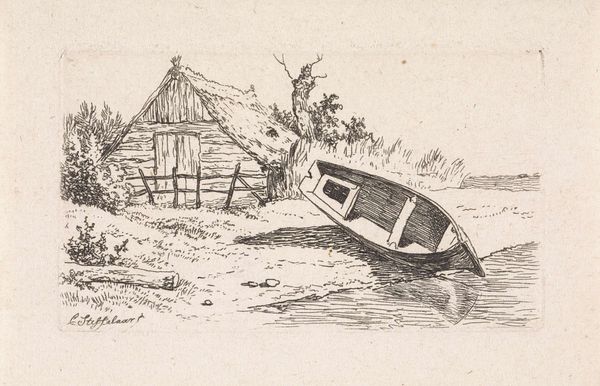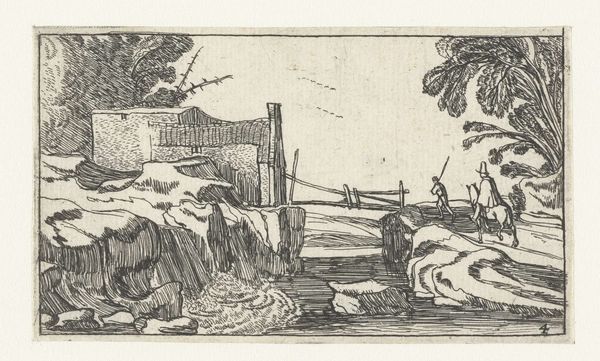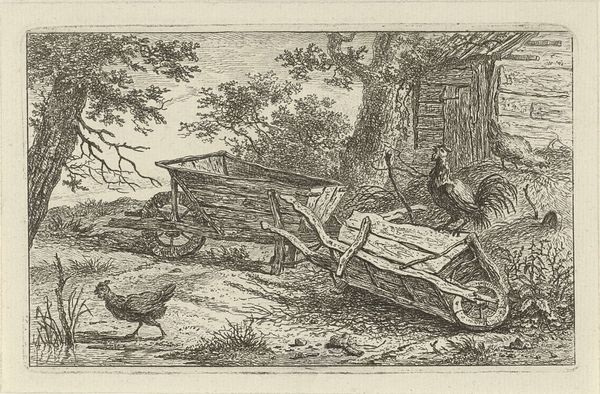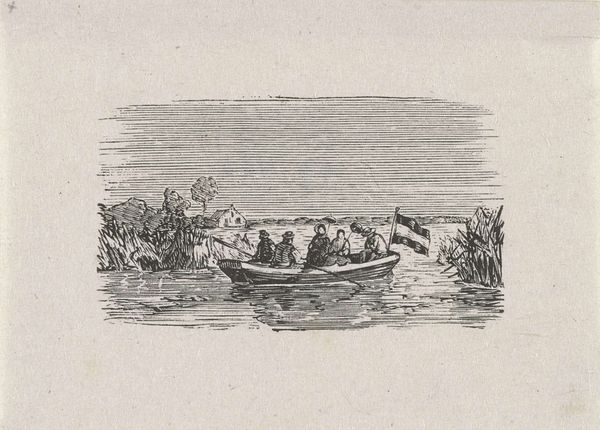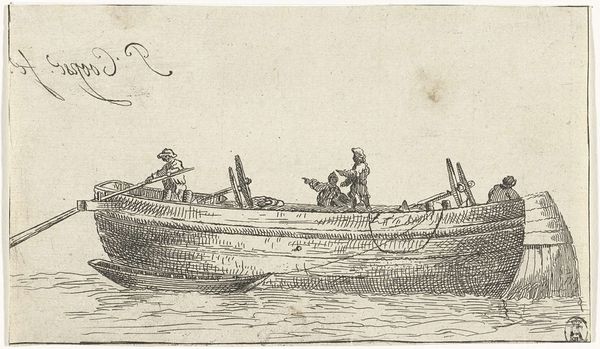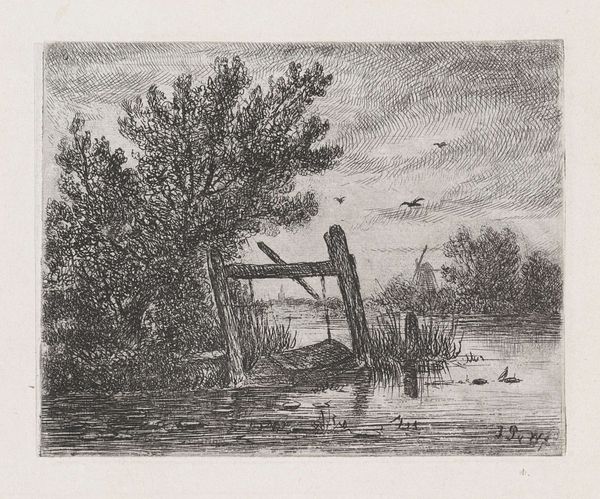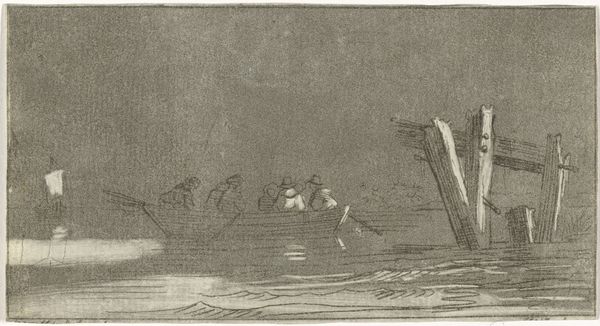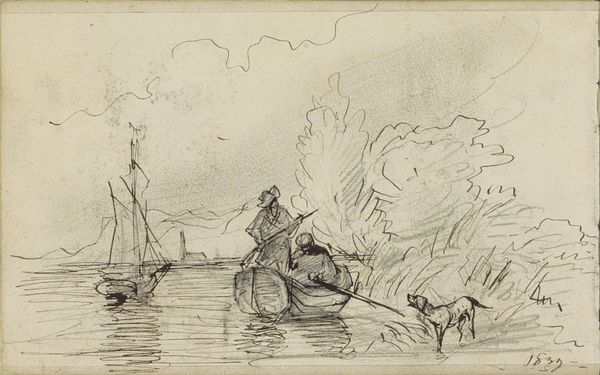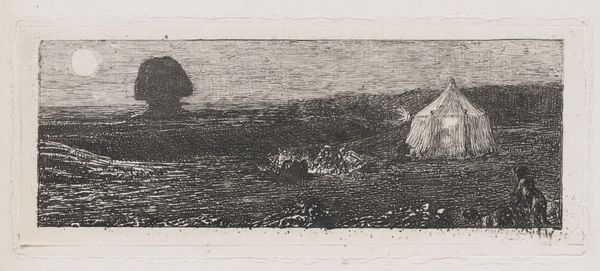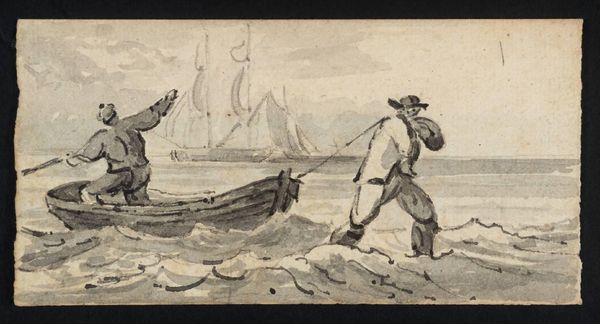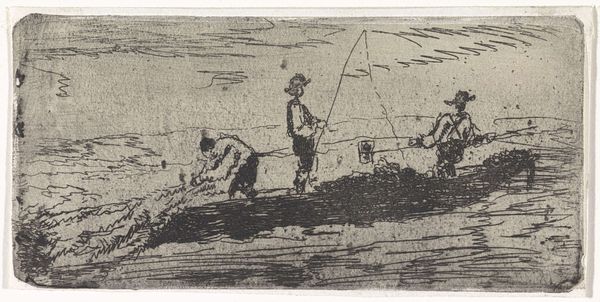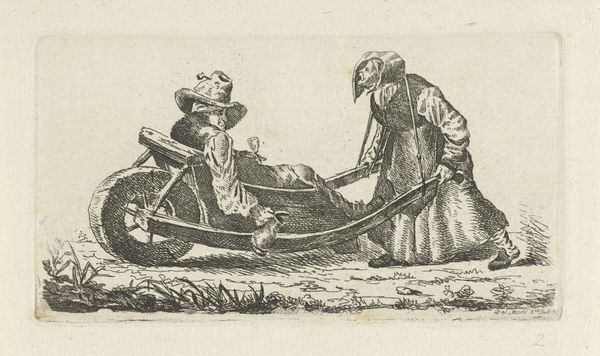
drawing, paper, ink, pen
#
drawing
#
mechanical pen drawing
#
pen illustration
#
pen sketch
#
landscape
#
paper
#
ink line art
#
personal sketchbook
#
linework heavy
#
ink
#
sketchwork
#
pen-ink sketch
#
pen work
#
sketchbook drawing
#
pen
#
genre-painting
Dimensions: height 39 mm, width 72 mm
Copyright: Rijks Museum: Open Domain
Curator: This is "Schip in reparatie" by Isaac Weissenbruch. It's estimated to have been made sometime between 1836 and 1912. We have this ink and pen drawing on paper in the Rijksmuseum collection. Editor: It feels very immediate, a snapshot almost. The heavy lines give a sense of the moment being quickly captured, an ephemeral scene. It reminds me of a personal sketchbook page. Curator: The scene itself depicts workers repairing a ship docked alongside a simple pier. The materiality is emphasized through line-work; observe how the penstrokes thicken in areas meant to denote shadow and weight, creating the illusion of depth. What can you say about the relationship between labor, leisure, and art that emerges in this picture? Editor: It’s a layered commentary, isn't it? We have figures engaged in work on this ship. Is the presence of the artist, then, an intrusion, observation, commentary or all? In this moment in history, are these labourers also consumers of images, and what do we say with the drawing? I think of the role of art during periods of intense industrial change – a longing to represent working conditions alongside, perhaps, nostalgia for an old way of life. Curator: Absolutely, and the artist's signature displayed prominently on the pier suggests his deliberate engagement. The symbol of a ship, though universal, carries layers of specific cultural weight. A ship can symbolize travel, exploration, and even commerce but in the Netherlands it is indelibly linked to naval power and history. Does the presence of laborers change how that symbol should be interpreted? Editor: The figures definitely complicate things. Are they reinforcing traditional forms of labor and the historical relevance of maritime power, or pointing to shifting social roles and economies? I'm intrigued by that smaller vessel sailing in the background, suggesting activity, contrasting with the anchored state of this primary ship and the figures hard at work. The work here makes us question the image: for whom is this ship being prepared and for what purpose? Curator: It gives pause. Through detailed rendering, the act of maintenance transforms into a subject worthy of consideration and I love how it makes us question progress and remember the quiet work sustaining it. Editor: This makes it evident that art allows society to recognize that continuous maintenance and revision are necessary, particularly during eras of societal transition. Thank you for discussing it with me!
Comments
No comments
Be the first to comment and join the conversation on the ultimate creative platform.

